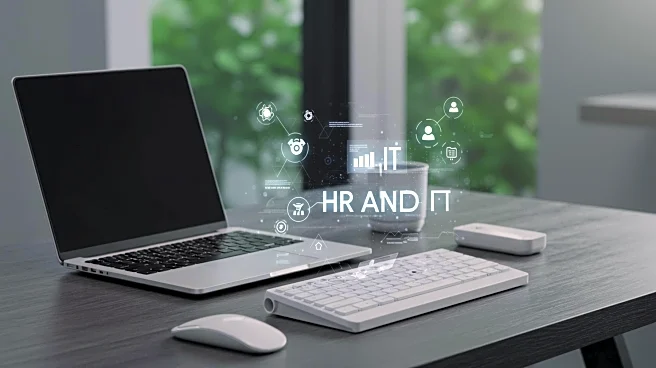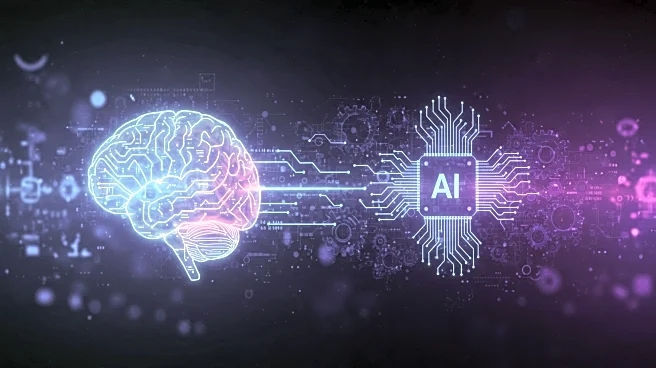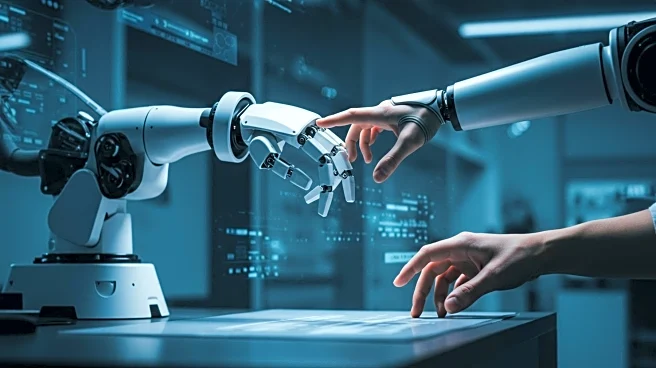What is the story about?
What's Happening?
The integration of Human Resources (HR) and Information Technology (IT) is becoming increasingly important as digital transformation reshapes workplaces. Disengaged employees and inefficient technology rollouts are prompting business leaders to reconsider the traditional separation of these departments. Experts argue that the disconnect between HR, which focuses on people and organizational health, and IT, which is driven by data and efficiency, leads to inefficiencies and communication issues. The integration of these departments is seen as a way to improve productivity, employee satisfaction, and engagement. Companies like Moderna and Workleap have already merged their HR and IT functions, resulting in improved employee experiences and operational efficiencies.
Why It's Important?
The integration of HR and IT is crucial for creating a seamless employee experience, especially in hybrid work environments. By aligning these departments, organizations can better leverage technology to support their workforce, leading to increased productivity and employee satisfaction. This integration also allows for better data utilization, enabling predictive hiring and strategic workforce planning. As companies face the challenges of digital transformation, the collaboration between HR and IT becomes essential for maintaining a competitive edge and fostering innovation.
What's Next?
Organizations are expected to continue moving towards HR-IT integration, with many predicting a complete merger of these functions within the next five years. This trend is likely to result in more efficient technology adoption and improved employee experiences. Companies that successfully integrate HR and IT will be better positioned to attract and retain talent, as well as adapt to the rapidly changing technological landscape.
Beyond the Headlines
The integration of HR and IT not only improves operational efficiency but also addresses the ethical and cultural dimensions of workplace transformation. By focusing on employee experience and engagement, organizations can create a more inclusive and supportive work environment. This approach also helps to shift the perception of digital transformation from being imposed on employees to being designed to support them.
AI Generated Content
Do you find this article useful?











